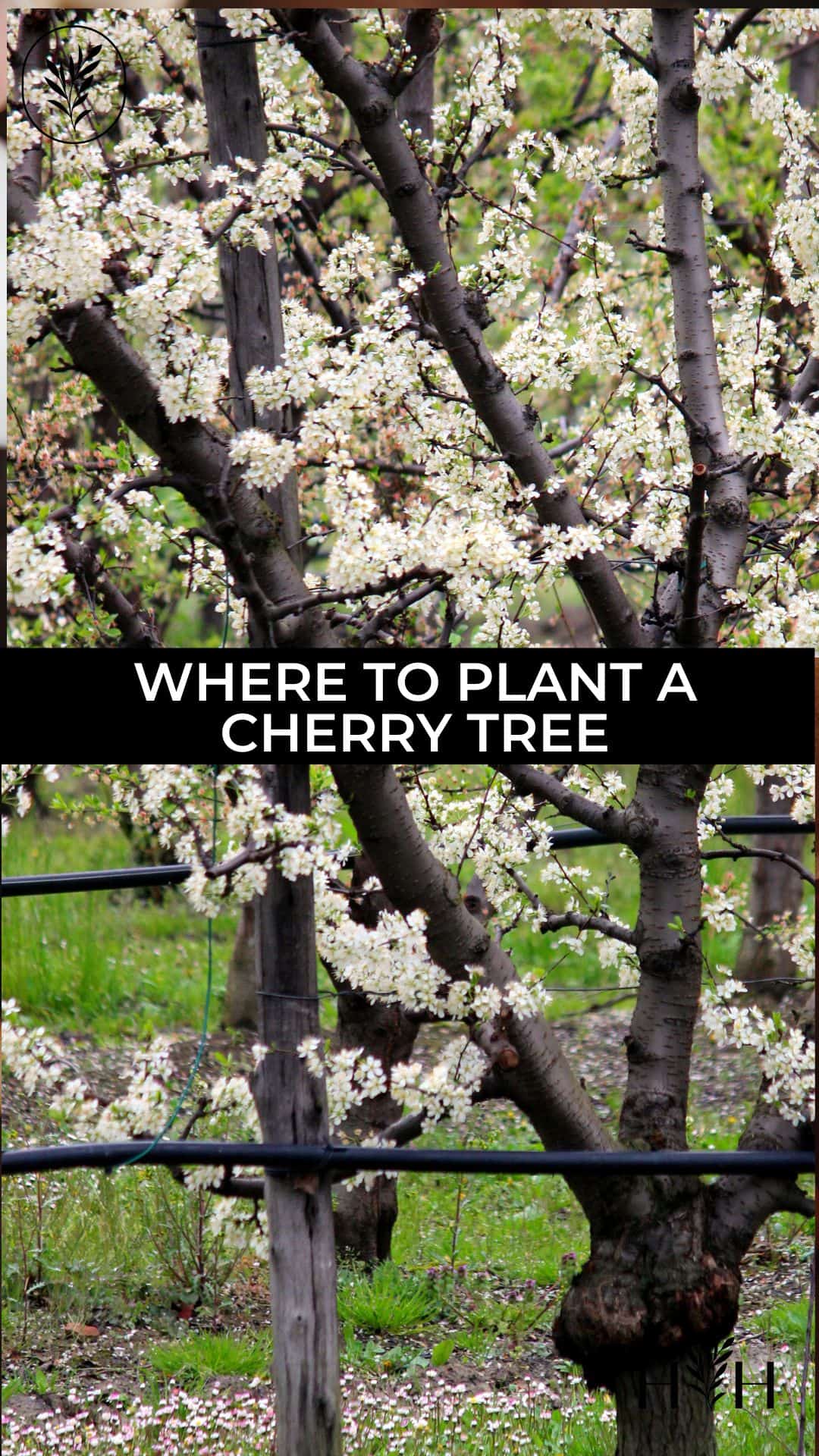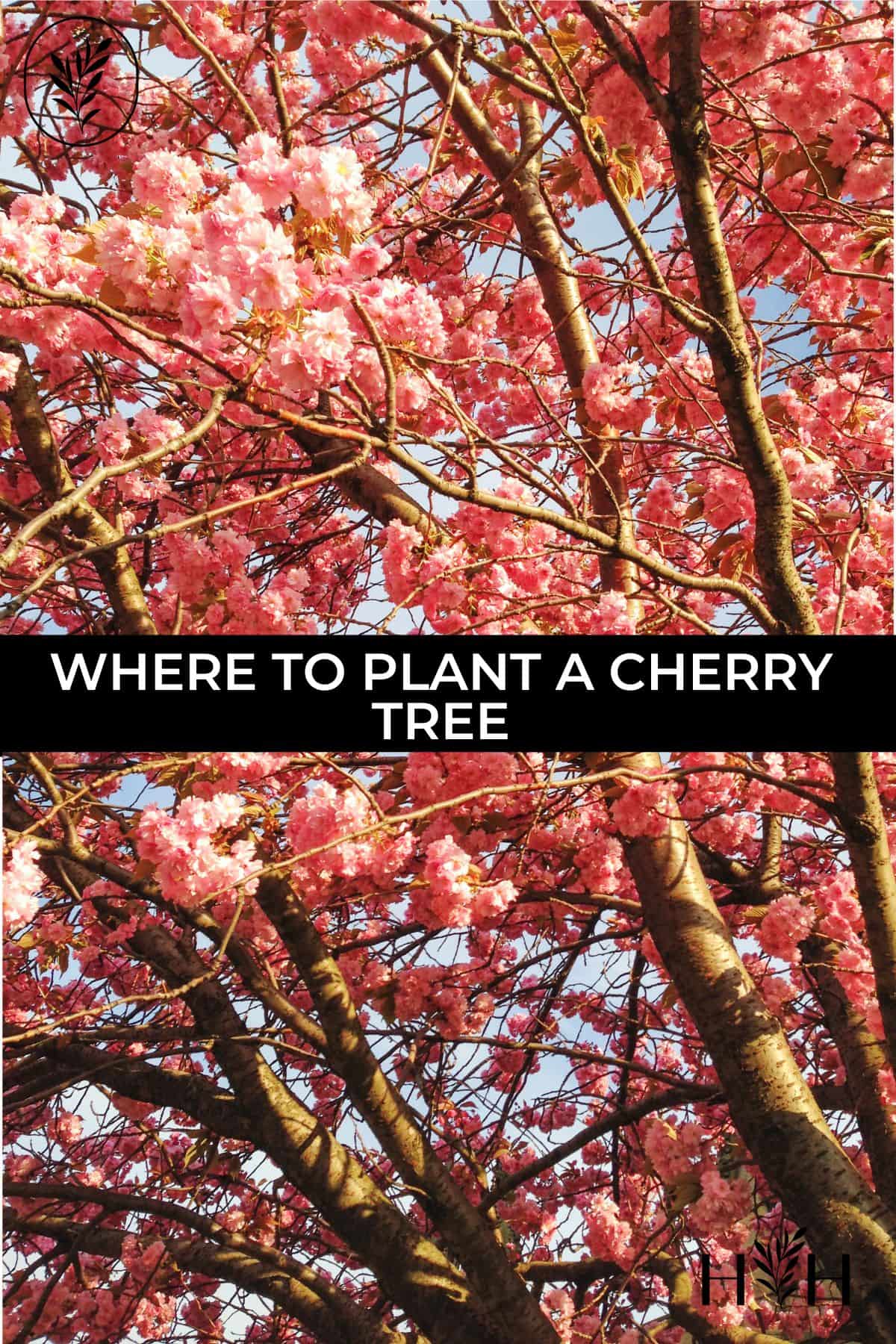Time to decide where to plant a cherry tree? Fortunately there are only a few key factors to keep in mind.
Cherry trees can be grown most easily in Zones 5-9. Plant your cherry tree in a sunny spot where it will receive a minimum of 6-8 hours of direct sunlight daily. The planting location will ideally also have well-drained fertile sandy loam soil and great air circulation, as well as room to grow and easy access to irrigation.
Read on to learn more about where to plant a cherry tree!
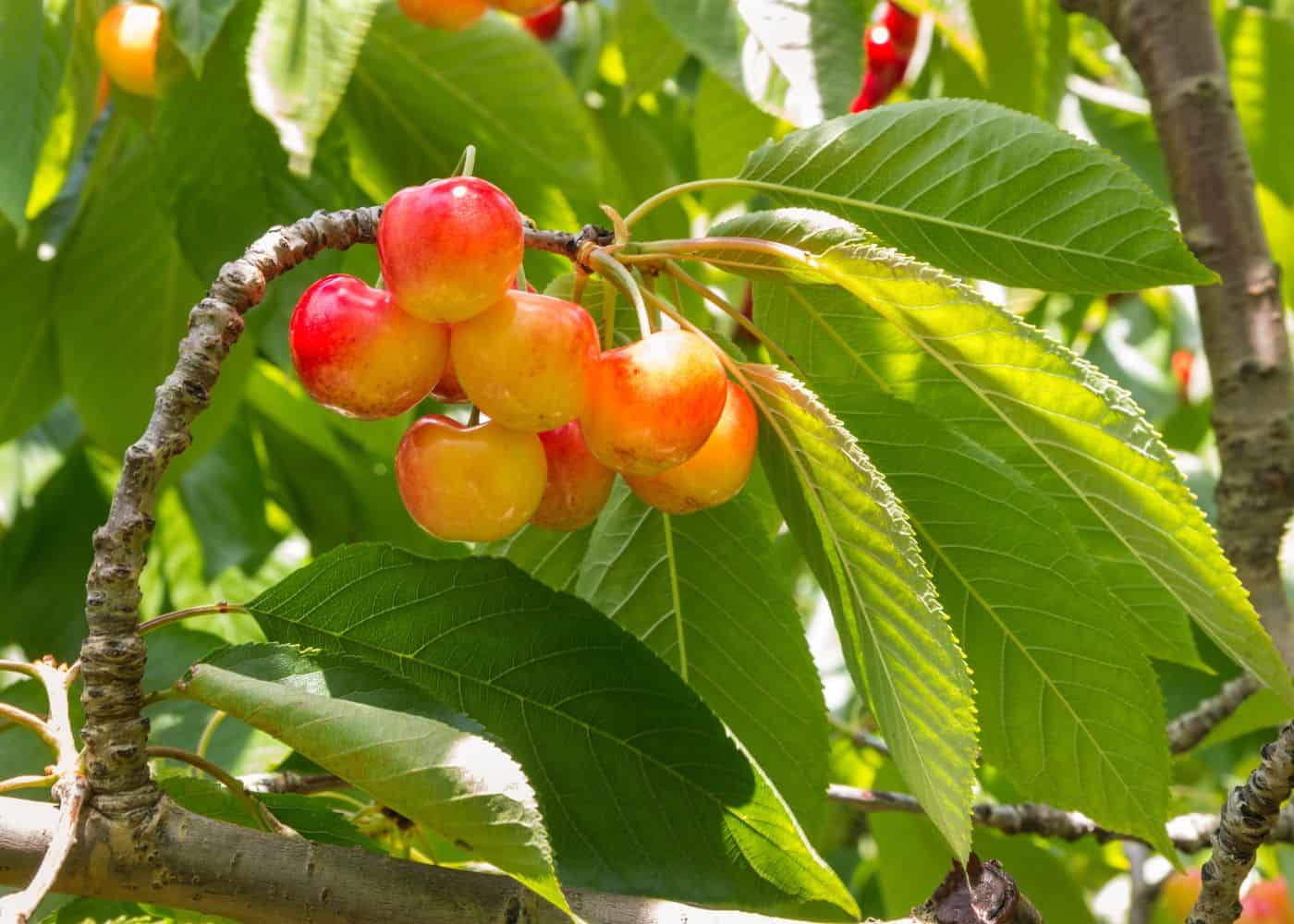
Where to plant a cherry tree
If you want to grow cherry trees in your own garden, there are some basics to learn such as choosing the best variety of cherry trees for your area, choosing where to plant a cherry tree, and learning how to care for it.
Here are the basics of where to plant it:
- Zones 5-9 (although certain varieties have extended hardiness range)
- Full sun (a minimum of 6-8 hours of sunlight per day)
- Well-drained soil (sandy loam is nice)
- Fertile soil with adequate mineral nutrition and organic matter
- Room to grow to 15-20 feet tall and wide (for most varieties)
- Good air circulation around the tree and through the branches
- Access to an irrigation water source
- Close to a different variety of cherry tree for pollination (for most varieties)
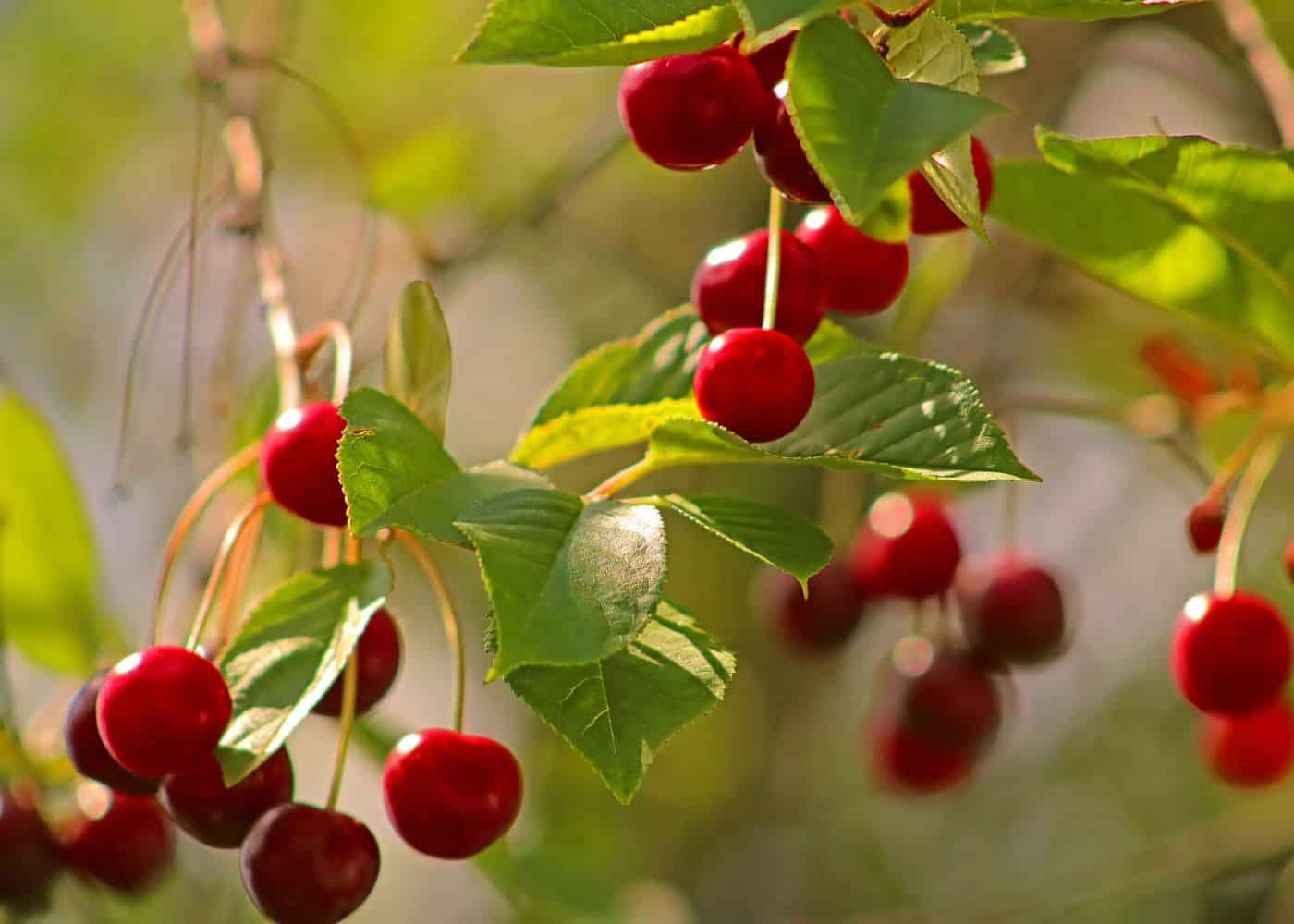
Cherry climate requirements
According to the Maine Organic Farmers and Gardeners Association, sour cherries (prunus cerasus) can thrive in Hardy Zones 4-7, making this tree an option for most cooler regions of America. However, sweet cherries (prunus avium) require a more precise climate and are generally only cold hardy down to Zone 5.
It is interesting to note that cherry trees, depending on the variety, require between 300-800 hours of cold winter weather (below 45 degrees Fahrenheit) in order to trigger fruit production. This is called a chilling hour requirement and means that cherry trees may not survive in southern and coastal areas with mild winters.
You can grow a cherry tree in various US regions, with the top-producing US states being Michigan, Wisconsin, Oregon, and California. According to the USDA, the United States exports 175 million pounds of cherries each year, making it the second-largest exporter of cherries in the world (behind Turkey).
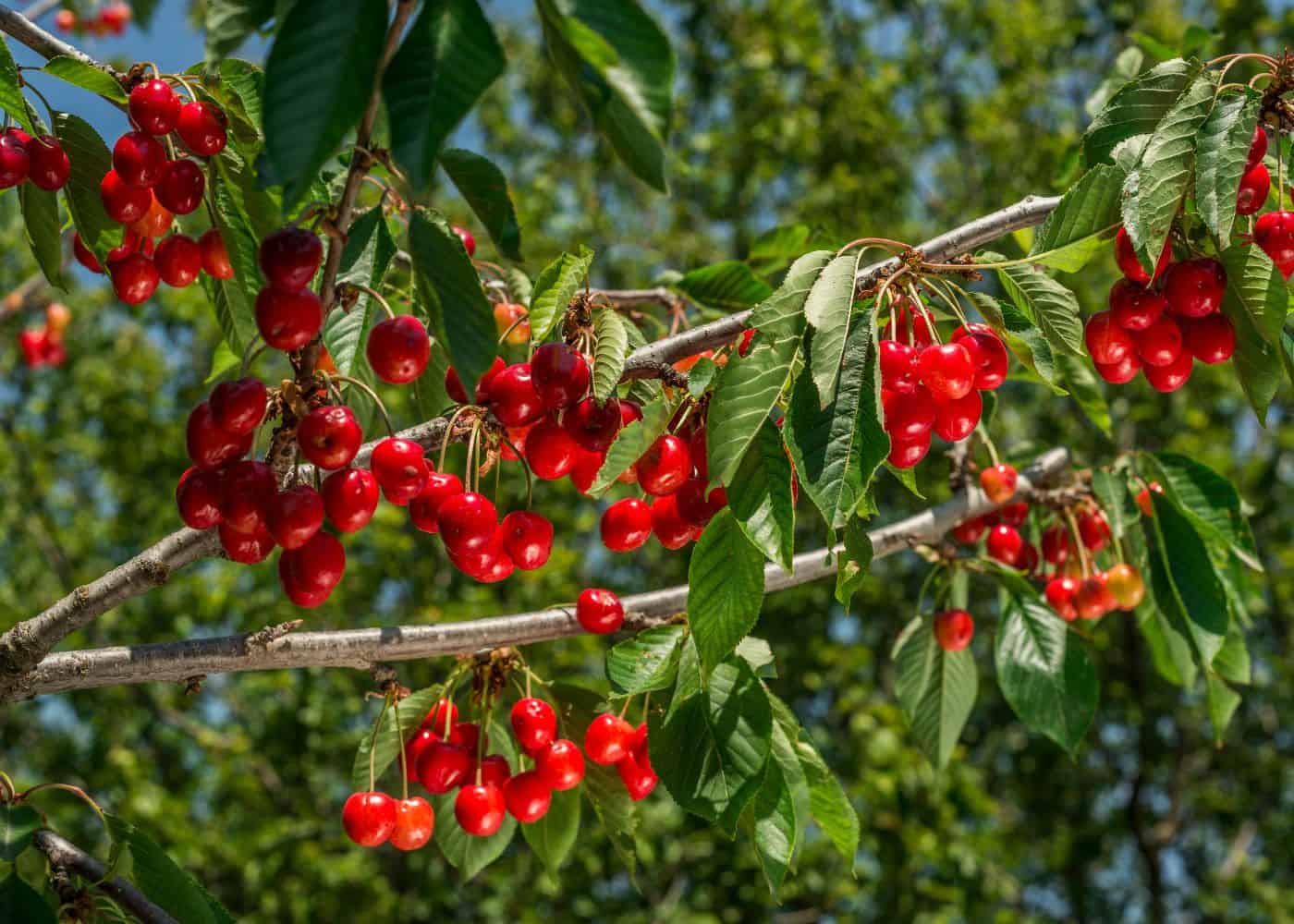
Sunlight requirements
These trees need full sun, with at least 6-8 hours of sunlight per day, so planting on a southern slope is ideal. The fruit can be damaged by late spring frost, so try to avoid placing the tree in the bottom of a valley where cold air can pool.
You’ll also want to make sure that fresh air and sunlight can reach inside the canopy of the tree to bathe the branches in sunlight and provide good air circulation. This can go a long way towards lessening fungal disease.

Soil for cherry trees
These trees do best in a sandy loam if available. Cherry trees do badly in wet, poorly drained areas as they are susceptible to rot. They do not live well in heavy clay soil and prefer a pH of around 6.5.
If your soil is poor, then create a raised bed area of well-drained soil. Dig out the poor soil and replace it with fertile soil that drains easily. Every year in early spring, you may need to add fertilizer to the area. Avoid over-fertilizing as it can lead to disease.
Types of cherries
When deciding to grow cherry trees, the first decision to make is whether to select a sour or sweet fruit variety. This decision involves more than just personal taste; it also depends on the climate of your area.
Here are some common types of cherry trees to plant:
- Bing Cherry (sweet variety, grows in Zones 5-9, reaches 16-20 feet tall)
- Lapins Cherry (sweet variety, grows in Zones 5-9, reaches 15-20 feet tall)
- Rainer Cherry (sweet variety, grows in Zones 5-9, reaches 15-25 feet tall)
- Stella Cherry (sweet variety, grows in Zones 5-9, reaches 15-18 feet tall)
- Royal Crimson Cherry (sweet variety, grows in Zones 8-10, reaches 15-18 feet tall)
- Carmine Jewel Cherry (sour variety, grows in Zones 3-8, reaches 6-7 feet tall)
- Juliet Cherry (sour variety, grows in Zones 2-7, reaches a 6-8 feet tall)
In general, sweet cherry trees are more difficult to grow than sour cherries. But if you happen to live in a great cherry-growing region such as Michigan, Wisconsin, Oregon, or the Okanagan Valley (Canada), it can certainly be worth trying sweet cherries!
There are dozens of different cherry tree varieties available on the market, each with specific pros and cons. Ask experts in your local area for their recommendations on planting cherry trees, so you can learn which tree varieties are already thriving in your neighborhood.
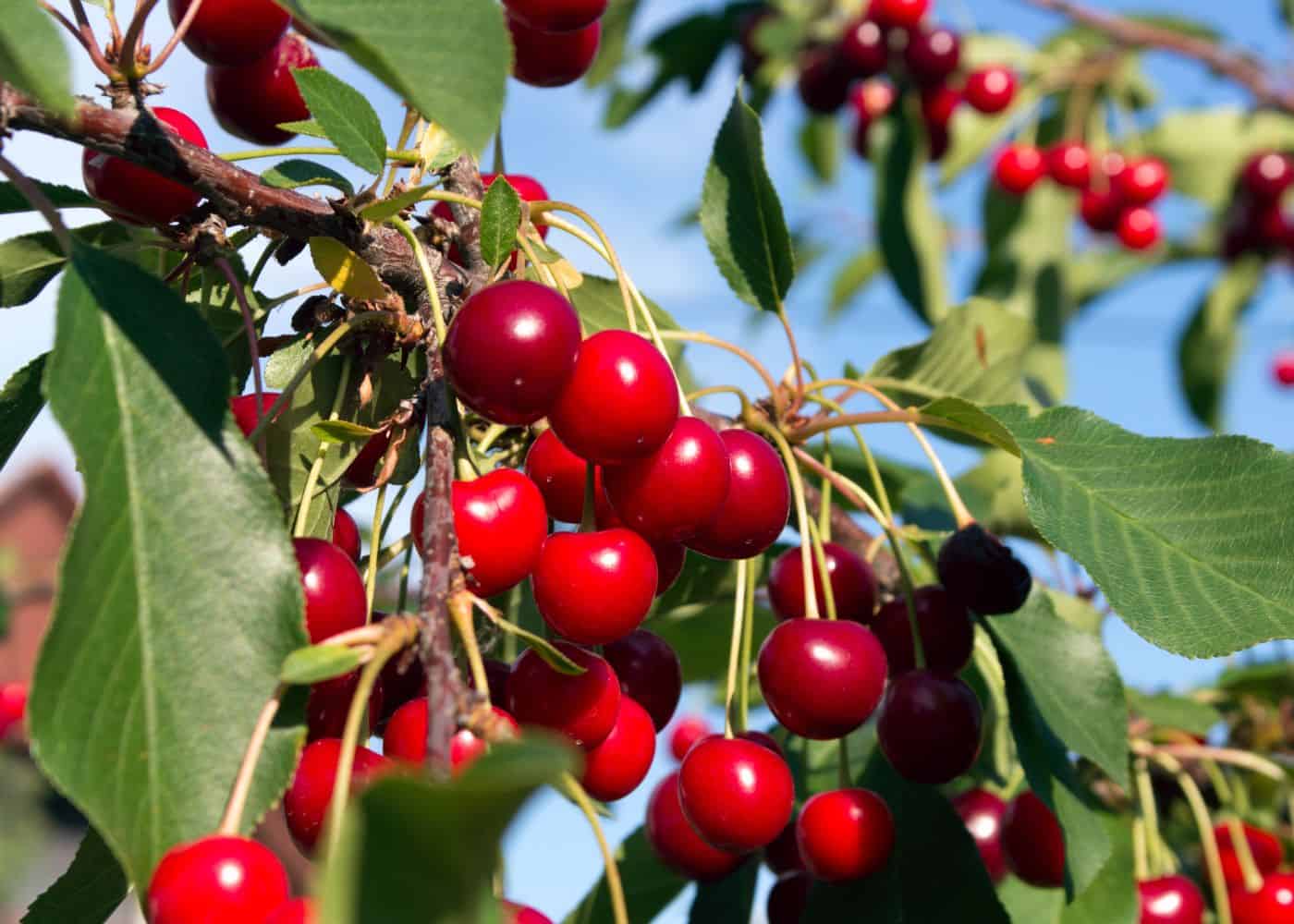
How many trees to plant for pollination?
According to Iowa State University, most sour cherry trees are self-fruitful or self-pollinating, meaning a single tree is able to pollinate its own flowers to bear fruit. Therefore, it is perfectly fine to plant just one sour cherry tree.
However, most varieties of sweet cherries are not self-fruitful, meaning you will need two or more trees of different compatible varieties near each other for pollination to occur. Check this chart from Michigan State University for pollination compatibility. Just be sure they are planted 25-40 feet away from each other to give them plenty of room for future growth (unless they are dwarf trees).
Water requirements
Young cherry trees need ample water to take root. Plan on providing young trees with at least one inch of water every week during the first growing year. The first six weeks are particularly important. Try to keep the ground consistently moist during this period, even if it means watering several times per week.
Once established, cherry trees are drought-resistant, so they will not need a lot of watering. The rain provided by nature should be enough for the tree to thrive. During a drought, you may need to water one inch per week.
Pruning requirements
As with all fruit trees, cherries require late-winter pruning to maximize growth and cherry production. In general, the goal of pruning is to clear center branches to create a “bowl”. This will allow maximum sun and good air circulation in the canopy. The art of pruning can be complex, so be sure to perform additional research, such as reading the guide recommended by Ohio State University.
Bearing fruit
It can take 4-7 years before a cherry tree is mature enough to produce fruit. During this waiting period, it is important to keep the tree fertilized, watered, and pruned.
Fruit production will be small during the first fruit-bearing years but should steadily increase each year. Depending on the variety, you may need to apply additional fertilizer during the fruit-bearing months, especially with sweet cherries.
The amount of fruit to expect when harvesting cherries varies widely depending on the variety of tree, age, and weather conditions. The average garden cherry tree can produce around 60 pounds of cherries each year, while the best commercial trees bear nearly 900 pounds of fruit annually.
Once your tree matures, plan on receiving an abundance of cherry fruit; have your pie recipes, freezer bags, and canning supplies ready. Or, let the fruit stay on the tree, and your yard will become a favorite for neighborhood birds.
Resources
References
- Michigan State University, Sweet Cherry Pollination Compatibility
- Iowa State University, Growing Cherries in the Home Garden
- Maine Organic Farmers and Gardeners
- Ohio State University, Edible Landscapes



